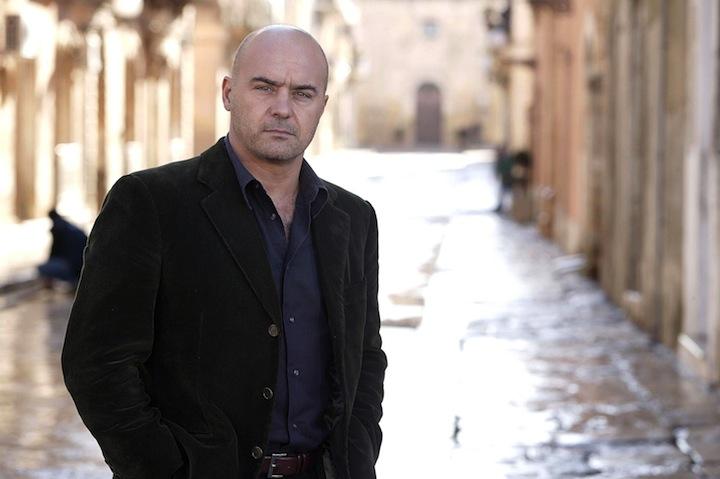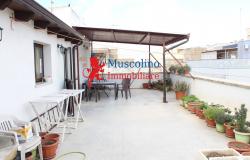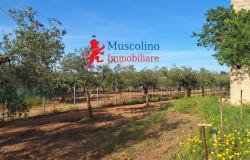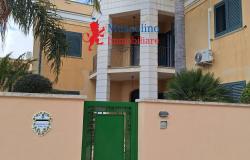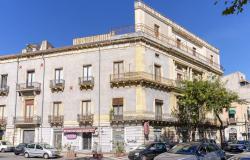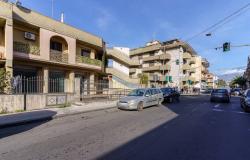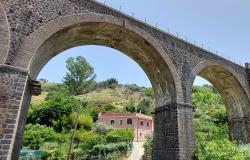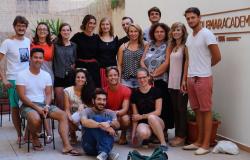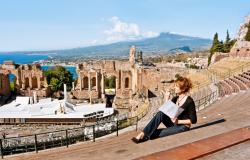Andrea Camilleri’s detective novels, featuring the irascible yet warm-hearted Inspector Montalbano, have long been international best-sellers. RAI, the Italian State broadcaster, was quick to interpret the author’s vision for the small screen and the programmes have been a firm favourite with Italians ever since. As television executives search Europe for innovative crime thrillers, Montalbano looks set to reach an even wider audience.
Home for the Inspector is the southern Sicilian town of Vigata – a thinly veiled disguise for the author’s childhood home of Porto Empedocle. At the heart of the town is Via Roma where the literary Salvo Montalbano likes to stop at his favourite Caffè Albanese for a coffee and cannolo, freshly baked and filled with sweet ricotta on the premises. The real Albanese has changed its name to Bar Vigata and is a magnet for all Salvo aficionados. Just down the road, leaning on a lamppost, is a statue of the inspector with a full head of hair and bushy moustache. Based on the few allusions to his physical appearance in the novels, the likeness of a slim, fifty-something individual is not reflected in the inspired casting of Luca Zingaretti as his TV persona. The younger, yet balding Zingaretti, has captured the character’s essence and has become synonymous with Camilleri’s detective.
The age and appearance of the central character is not all that has changed for the television. The producers chose the cinematic towns of Baroque south-eastern Sicily as the backdrop to Salvo’s investigations. Ragusa Ibla has the leading role. The older sister to modern Ragusa, its honey-coloured buildings drape the hillside from the imposing Church of San Giorgio to the valley floor below. The best place to start a walk in Montalbano’s footsteps is from the magnificent staircase that leads down from the church that now doubles as Vigata’s chosen place of worship.
 Piazza Duomo lays at the feet of San Giorgio and is liberally sprinkled with restaurants and shops. As you stroll the palm-arcaded central avenue, look out for the distinctive balustraded archway over Conte Cabrera Street which bisects the square. Opposite the arch, the street is lined with imposing town houses, one of which plays home to Clementina Vasile Cozzo, who spied the goings-on in Lapecora’s office during the episode entitled, The Snack Thief.
Piazza Duomo lays at the feet of San Giorgio and is liberally sprinkled with restaurants and shops. As you stroll the palm-arcaded central avenue, look out for the distinctive balustraded archway over Conte Cabrera Street which bisects the square. Opposite the arch, the street is lined with imposing town houses, one of which plays home to Clementina Vasile Cozzo, who spied the goings-on in Lapecora’s office during the episode entitled, The Snack Thief.
Winding your way further downhill from the central piazza, you’ll find yourself in Corso 25 Aprile. This street takes you to another key location in Salvo’s itinerary. Integral to the books and the films is Montalbano’s love of traditional, local, Sicilian food. For the detective, it is not just a pleasure, but a quasi-religious experience to be enjoyed in silence. In the early episodes, his restaurant of choice is the Trattoria San Calogero, a role beautifully taken by La Rusticana. Located halfway down the Corso, it serves just the sort of food Salvo would appreciate. You will recognize it by the romantic, vine strewn arbour and, if you eat inside, you can’t fail to notice the distinctive flock-wallpapered arches and proudly displayed photographs of the cast and crew.
One of the most iconic locations, featured in numerous episodes is the viewpoint by Santa Maria delle Scale, which gives a spectacular view over Ragusa Ibla. Scrolled wrought-iron banisters follow the sweep of the stairs next to the church. The undulating landscape dropping to the valley floor and rising to the heights of San Giorgio is a filmmaker’s dream.

View on Ragusa Ibla
If you want to re-enact the inspector’s oft-dreaded trips to see his officious boss, Bonetti-Alderighi, at the Montelusa headquarters, head for Piazza Pola. The Church of San Giuseppe, one of Ibla’s Rococo jewels, adjoins the equally imposing municipal building. However, to find Vigata’s headquarters, you need to leave Ragusa in a southerly direction and travel down to Scicli, which forms part of the Val di Noto, a UNESCO World Heritage site.
Right at the heart of this less flamboyant baroque settlement is Via Mormino Penna, self-styled as Scicli’s living room. The town hall doubles as the commissariato di Vigata and a sign to the side of the entrance features screen shots of Montalbano’s faithful officer, Fazio, in action.
The surrounding rural countryside is a beautiful maze of dry-stone walls, olive groves and pastures. This distinctive landscape is instantly recognisable in episodes such as Equal Time. It’s also a favourite spot for Catarella – Salvo’s endearingly incompetent desk sergeant – to collect mushrooms and snails from the stone crevices. The Mediterranean shimmers in the background, calling the Inspector home to his beachside house.

Camilleri located Montalbano’s retreat in the suburb of Marinella. The on-screen property is found at Punta Secca, some 6 km from the larger town of Santa Croce Camerina. The title sequence of each episode finishes by spinning over this very distinctive residence – the focal point for any trip in the footsteps of our detective. The house sits right on the beach in Piazzetta della Torre Scalambri, so named after the 11th century tower opposite.
The balcony and terrace overhang the sand and it is here that Salvo takes his morning coffee or evening meal. The sea stretches away to the horizon and often beckons the Inspector for a pre-breakfast swim. The stone benches in the little square are lined with cap-wearing Sicilian pensioners – by now familiar with the Montalbano fans posing for the camera in front of the brightly painted green shutters. Look closely, and you’ll find a Bed & Breakfast sign – an invitation to relive your favourite episodes.
Montalbano's House in Punta Secca (Santa Croce Camerina)
Before leaving the Ragusa region, one last stop is essential: the Castello di Donnafugata. The crenulated rooftop and Gothic arched windows form part of the unmistakable lair of Don Balduccio Sinagra, the aged Mafia boss who likes to summon Montalbano for ‘a little talk’. The two perform a ritual dance they’ve been through on many occasions: little is said, but much is understood.
Further afield, it’s no surprise that the episode entitled Excursion to Tindari ends with Salvo and his womanising deputy, Mimì, accompanied by their respective partners, enjoying a rare moment of harmony at the Shrine of the Black Madonna in Tindari. They overlook the beautiful spit of land that juts into the azure of the Tyrrhenian Sea, far from Vigata, but a fitting end to any journey.
****
If you want to stay in the Inspector’s house, book here:
www.discoveringsicily.com
If you want to buy Camilleri's Novels:
Camilleri Novels
If you want to get Montalbano's series in DVD:
Montalbano in DVD
Catch up on missed episodes by watching with RAI online:
www.montalbano.rai.it
Join the Camilleri Fan Club:
www.vigata.org
